Running an ecommerce business today is both exciting and overwhelming. You can set up a Shopify or WooCommerce store in hours, launch ads the same day, and start attracting traffic almost instantly. But here’s the reality many founders face: traffic doesn’t always turn into sales.
You may spend weeks building a beautiful store, writing product descriptions, and driving visitors through ads or organic search, yet conversions remain frustratingly low. People browse, click, maybe even add to cart, but they don’t buy.
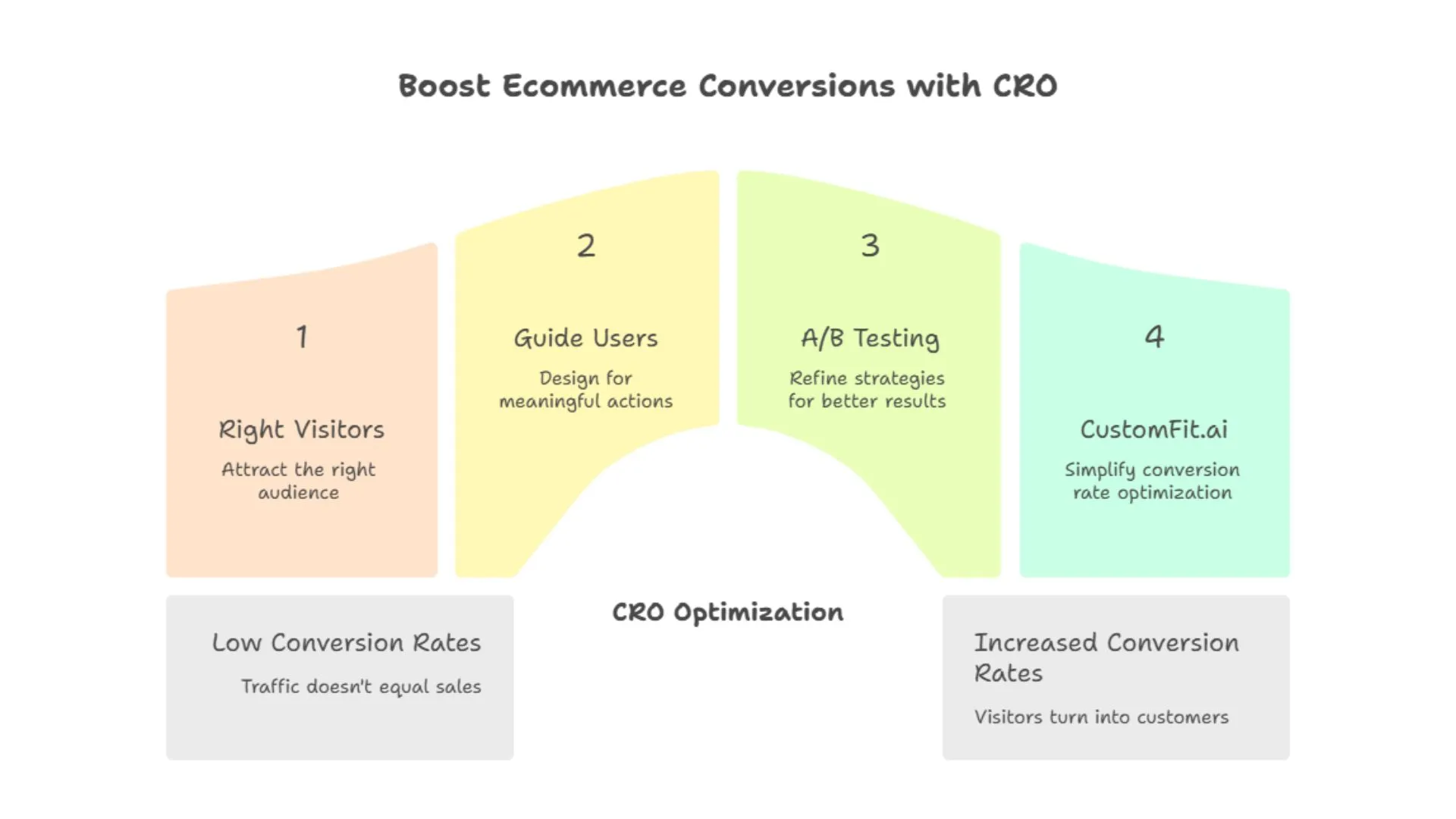
This is where CRO optimization comes in. It’s not about getting more visitors but about getting the right visitors to act. Whether that means buying a product, signing up for a newsletter, or clicking a CTA button, CRO optimization ensures your site is designed and refined to guide users toward meaningful actions.
In this guide, we’ll go deep into what CRO optimization is, why it matters, the strategies that work, the role of A/B Testing Platforms, and how tools like CustomFit.ai can help ecommerce brands increase conversion rate without unnecessary complexity.
CRO optimization stands for Conversion Rate Optimization optimization, which might sound repetitive, but in practice, it refers to the systematic process of improving your website or app to increase the percentage of visitors who take a desired action.
The “desired action” could vary depending on your business:
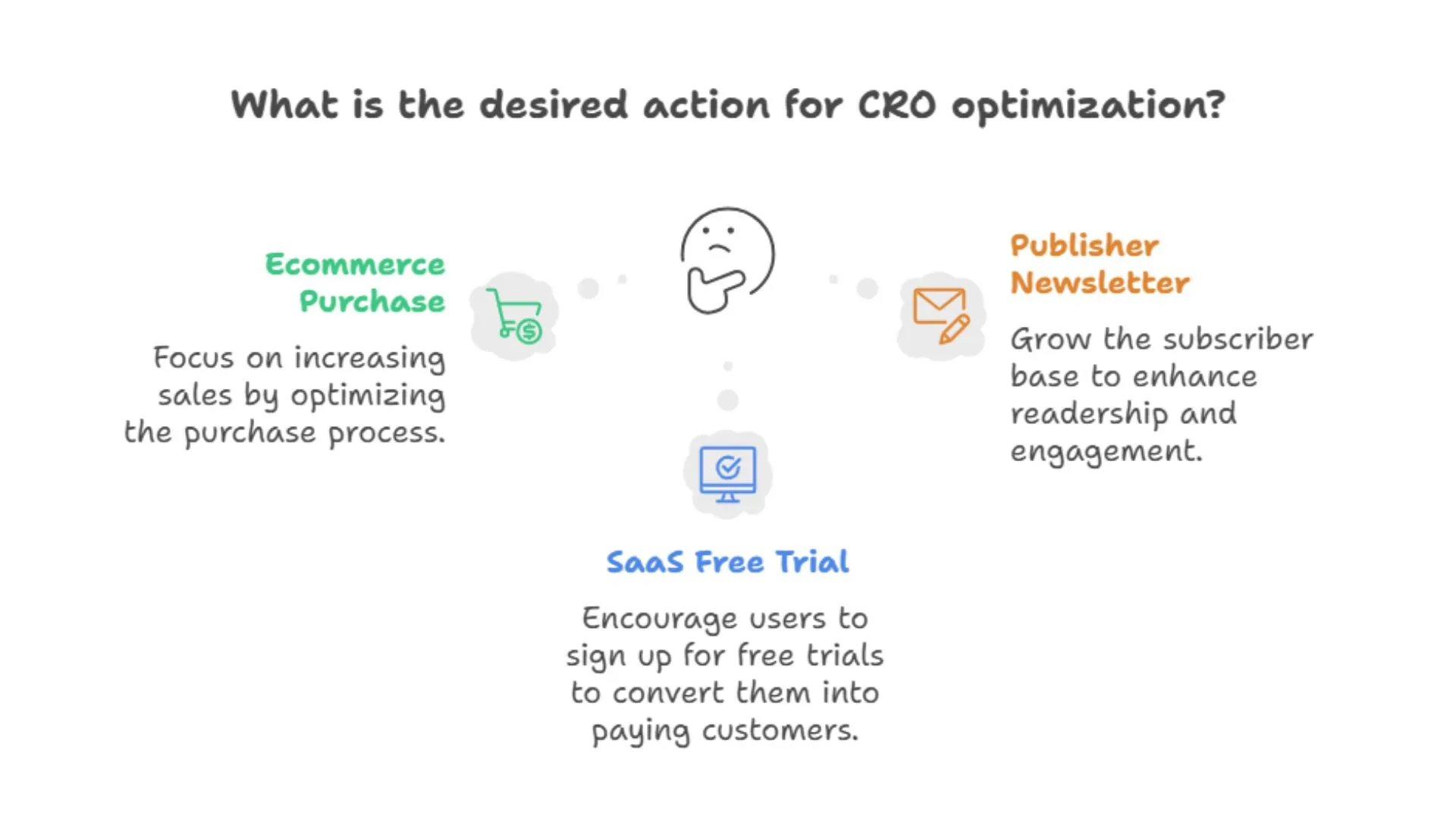
At its core, CRO is about making data-driven decisions to improve the user journey. Instead of guessing what might work, you run experiments, analyze behavior, and refine pages until they produce better outcomes.
In ecommerce, every click and every second on your site counts. You spend money to bring visitors in—through ads, SEO, social campaigns, or email—and if they don’t convert, you lose both revenue and momentum.
Some key reasons why CRO optimization is essential for ecommerce:
Acquiring traffic is not cheap. If 1,000 visitors land on your store but only 10 buy, your conversion rate is just 1%. By optimizing your site, if you move that number to 3%, you’ve essentially tripled your sales without spending more on ads.
Today’s customers expect fast load times, personalized experiences, and frictionless checkout. If your site lags or feels generic, they bounce. CRO helps bridge the gap between visitor expectations and your website experience.
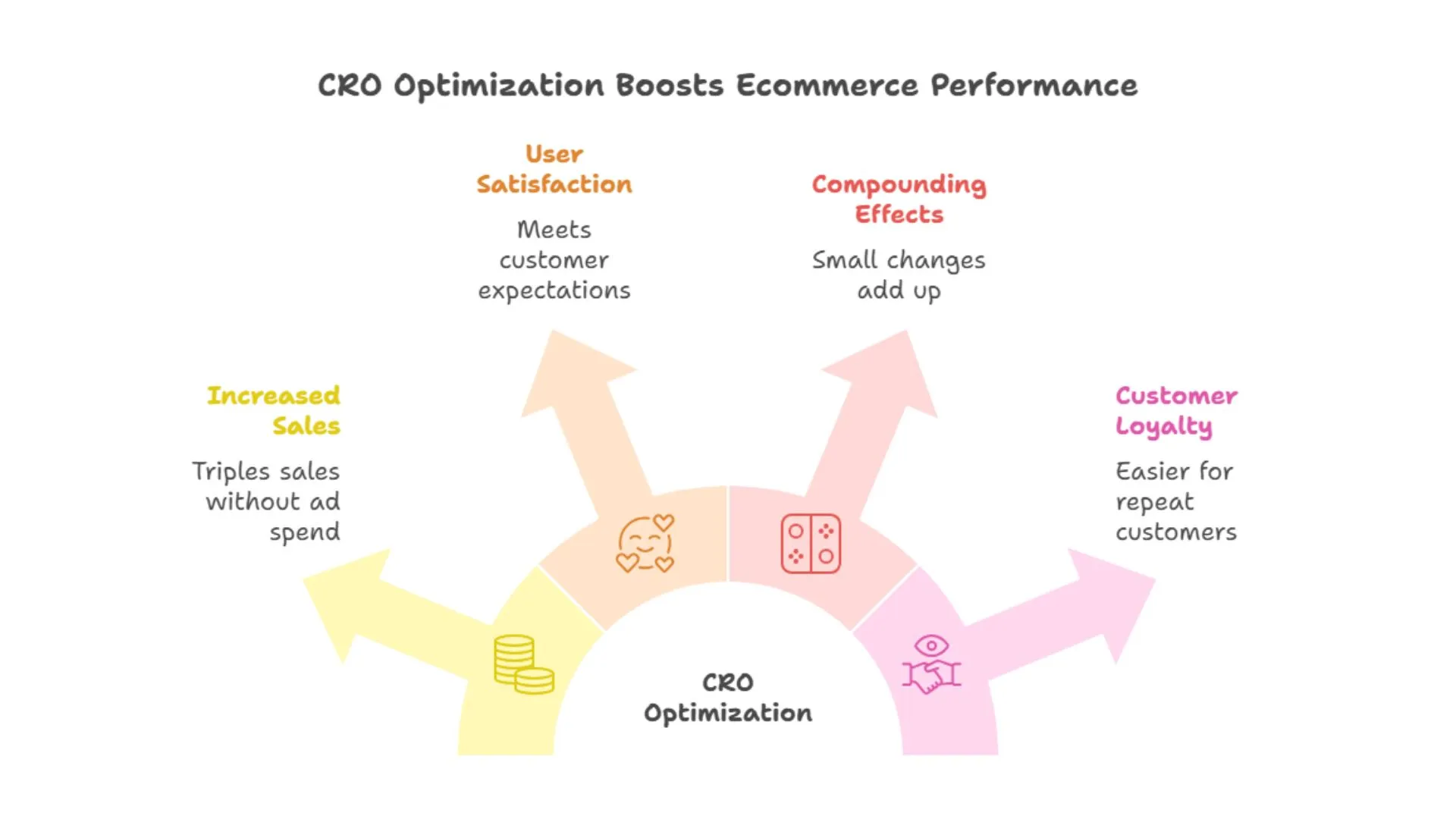
CRO is about incremental improvements that add up. A button color change alone won’t double your sales, but when combined with better headlines, clearer pricing, faster checkout, and targeted offers, you can see compounding effects.
CRO isn’t just about first-time buyers. Optimizing the experience makes it easier for repeat customers to come back, boosting lifetime value.
To truly understand CRO, let’s break down the key areas it covers.
A smooth, intuitive site layout is the foundation of CRO. Think about how easy it is for customers to find products, navigate categories, and complete checkout.
Your words matter. A confusing product description or vague call-to-action (CTA) can cause hesitation. CRO involves testing headlines, CTAs, and descriptions to find what resonates.
From product images to trust badges, design elements influence decision-making. CRO often explores layout changes, image types (lifestyle vs studio), and even font choices.
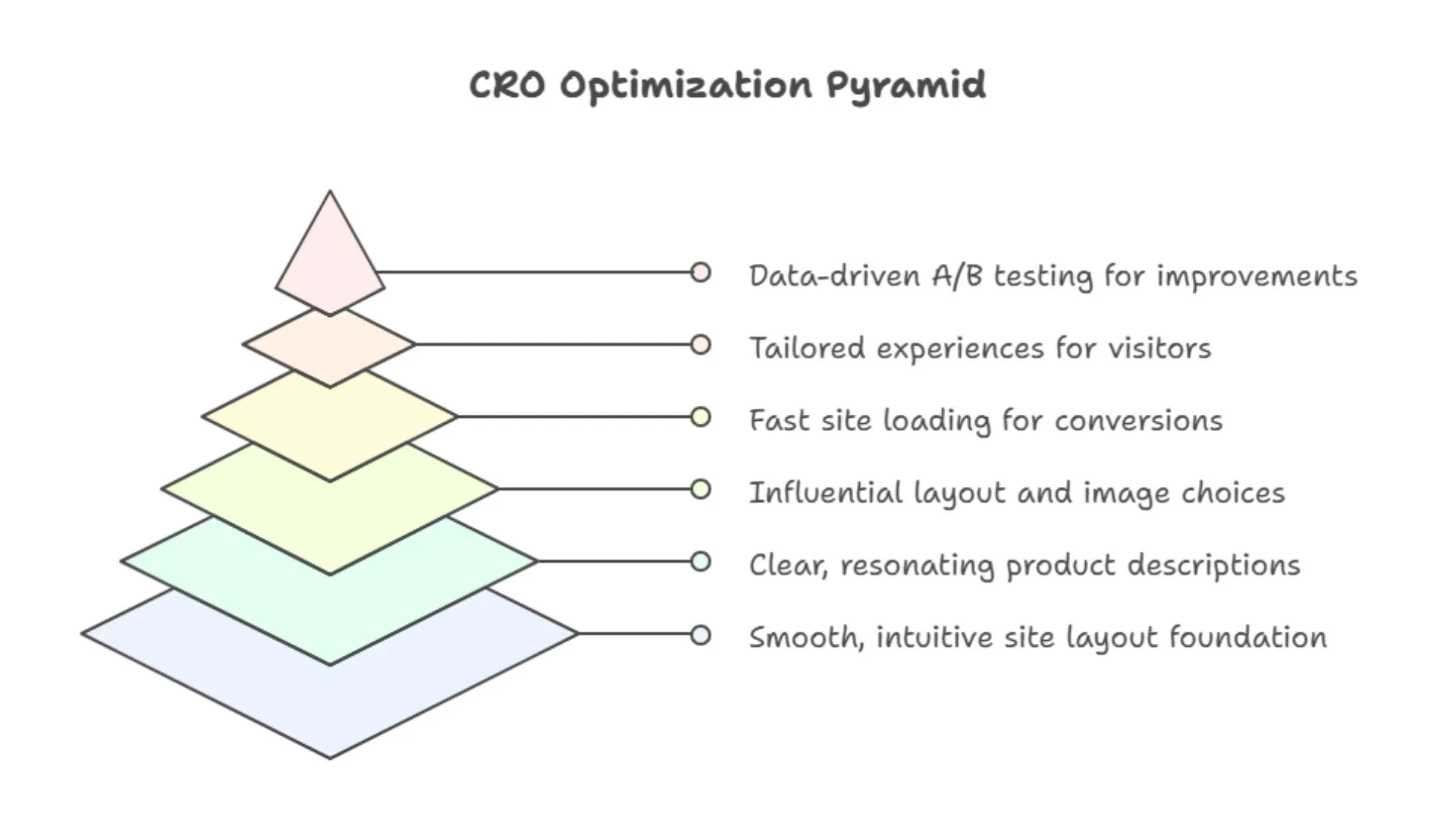
A slow site is a conversion killer. CRO optimization always includes performance checks—compressing images, optimizing code, or using CDNs to ensure pages load instantly.
Not all visitors are the same. CRO increasingly involves showing personalized experiences depending on location, device, referral source, or behavior. Tools like CustomFit.ai make personalization accessible to ecommerce founders without coding.
CRO isn’t guesswork. It relies heavily on A/B Testing Platforms where you pit one version of a page against another and let the data decide which one converts better.
A big part of CRO optimization is A/B Testing (also called split testing). Here’s how it works:
For example:
Over time, these tests reveal what actually works with your audience.
While you could theoretically hard-code changes and measure analytics manually, that’s inefficient and prone to errors. A proper A/B Testing Platform like CustomFit.ai makes the process easier by:
This saves time, reduces technical dependency, and gives marketers the freedom to test often.
Let’s walk through a practical step-by-step process for ecommerce brands.
What counts as a conversion? Is it a purchase, add-to-cart, or email signup? Defining this helps you track and optimize the right metrics.
Look at how customers move from landing on your site to checkout. Where do they drop off? Tools like Google Analytics and heatmaps can highlight friction points.
Common ecommerce bottlenecks include:
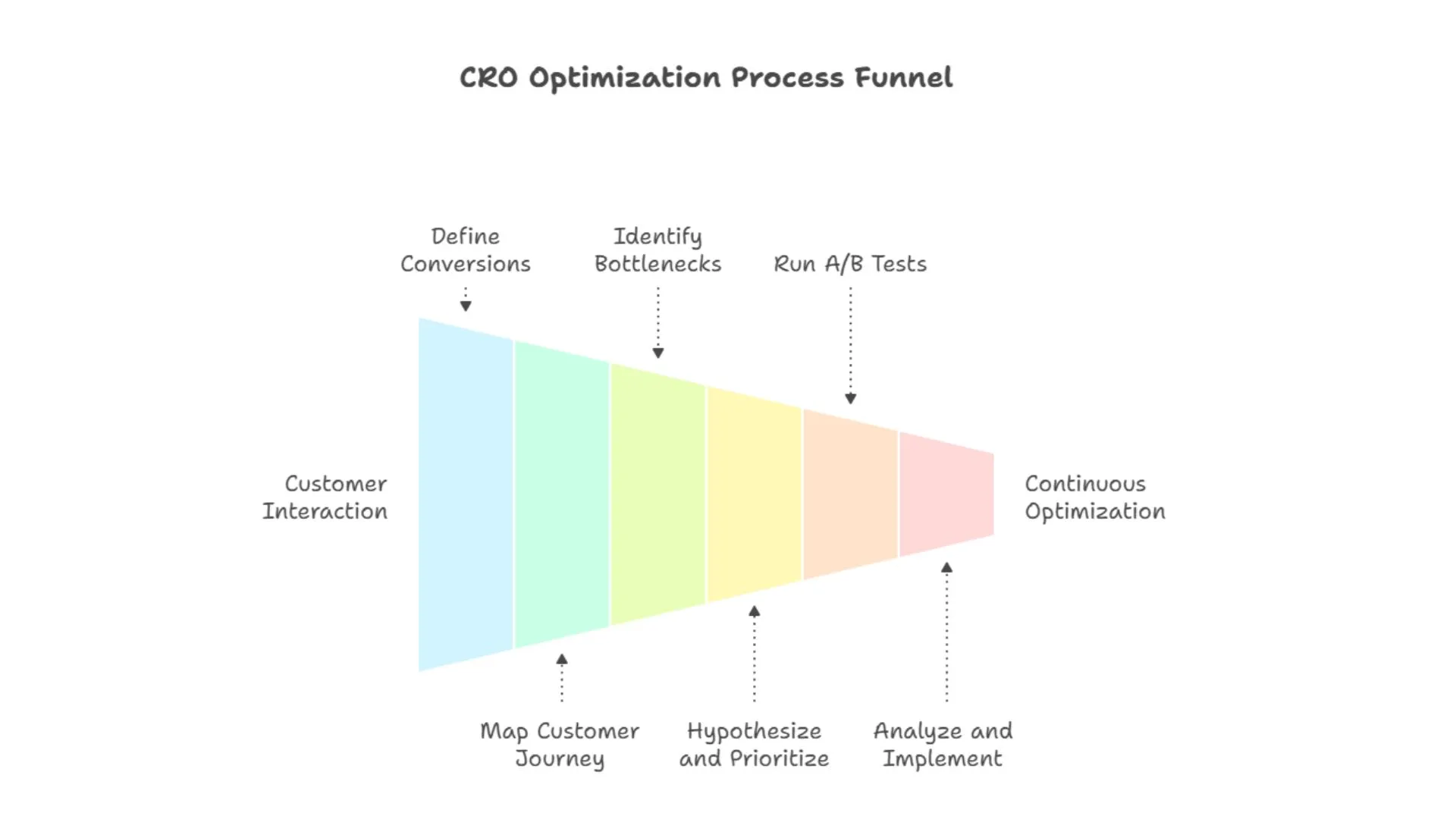
Make educated guesses about what to test. For example, if data shows a high drop-off on the cart page, you might test displaying estimated shipping upfront.
Use an A/B Testing Platform to test your hypotheses. Always test one element at a time for clarity.
Check the results. If the variant wins, roll it out. If not, use the data to refine your next test.
CRO is not one-and-done. Continuous testing ensures your site adapts to evolving customer behaviors.
Here are actionable strategies ecommerce brands can start testing today:
For many Shopify and D2C brands, the challenge with CRO isn’t knowing what to test—it’s executing those tests quickly without relying on developers.
This is where CustomFit.ai plays a role:
Instead of overcomplicating CRO, CustomFit.ai makes it practical, fast, and actionable for ecommerce teams.
Q1: What is CRO optimization in simple terms?
CRO optimization is the process of improving your website to increase the percentage of visitors who take desired actions like buying, signing up, or clicking a CTA.
Q2: Why is CRO optimization important for ecommerce?
Because traffic is expensive. CRO ensures the visitors you already have are more likely to convert, helping you increase sales without overspending on ads.
Q3: How does A/B Testing fit into CRO optimization?
A/B Testing is the backbone of CRO. It allows you to compare different versions of a page or element to see which drives more conversions.
Q4: What is the best A/B Testing Platform for ecommerce?
Several tools exist, but for ecommerce stores on Shopify or WooCommerce, CustomFit.ai is a strong choice because it combines A/B Testing with personalization and is designed for non-technical teams.
Q5: Can CRO optimization help increase conversion rate ecommerce quickly?
Yes, even small improvements like better product descriptions or simplified checkout can significantly improve conversions when tested properly.
Q6: Do I need developers for CRO optimization?
Not always. Tools like CustomFit.ai allow marketers to run AB tests and personalize sites without needing developer support.
Q7: How do I know what to test first?
Look at your analytics. Start with the pages that have high traffic but low conversions, such as product pages or checkout.
Q8: Is CRO a one-time project?
No. CRO optimization is ongoing. Customer behaviors and market trends change, so continuous testing is key.
CRO optimization is no longer optional—it’s essential for ecommerce growth. At a time when acquiring traffic costs more than ever, improving conversion rates can unlock massive value without increasing ad budgets.
By focusing on user experience, personalization, and systematic testing through an A/B Testing Platform, ecommerce brands can turn browsers into buyers.
Whether you’re testing product images, checkout flows, or personalized banners, tools like CustomFit.ai make CRO optimization accessible and effective. The real secret? Start small, keep testing, and let the data guide you.